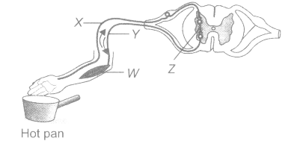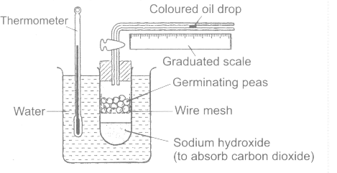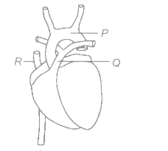Anil Ahlawat Solutions for Chapter: Life Processes, Exercise 1: EXERCISES
Anil Ahlawat Science Solutions for Exercise - Anil Ahlawat Solutions for Chapter: Life Processes, Exercise 1: EXERCISES
Attempt the free practice questions on Chapter 6: Life Processes, Exercise 1: EXERCISES with hints and solutions to strengthen your understanding. NSO Science Olympiad Workbook Grade 10 solutions are prepared by Experienced Embibe Experts.
Questions from Anil Ahlawat Solutions for Chapter: Life Processes, Exercise 1: EXERCISES with Hints & Solutions
The light phase of photosynthesis occurs in _____ and dark phase occurs in _____.
Gita is supposed to face an interview. During the first five minutes before the interview she experiences sweating, increased rate of heartbeat, increased respiratory rate, etc. Which of the following hormones has increased in her blood and is responsible for her restlessness?
Transpiration has been described as a 'necessary evil' because it is inevitable, but potentially harmful. Which of the following statements describe this?
(i) It causes absorption of mineral salts.
(ii) It regulates plant temperature.
(iii) It causes wilting and injury in plants
(iv) It causes ascent of sap.
Match the phytohormones in column I with role played by them in column II and select the correct option from the codes given below.
| Column I | Column II |
| (a) Auxin | (i) Cell division |
| (b Gibberellin | (ii) Induces seed dormancy |
| (c) Cytokinin | (iii) Cell enlargement |
| (d) ABA | (iv) Ripening of fruits |
| (e) Ethylene | (v) Breaking seed dormancy |
The given figure shows the pathway of a nerve impulse in a reflex action. Which part serves as a link between neurons?


Study the given experimental set-up.
By measuring the movement of the oil drop in the apparatus, what can be investigated?
Given below are the events of photosynthesis. Identify which of the following is/are not true and select the correct option.
Absorption of light energy by chlorophyll.
Conversion of light energy to chemical energy and splitting of carbon dioxide into carbohydrates and oxygen.
Reduction of carbon dioxide to carbohydrates.
Conversion of chemical energy to radiant energy and splitting of water molecules into hydrogen and oxygen.
Which of the following statements are correct regarding the given figure?

(i) The parts labelled as Q and R carry blood having low oxygen concentration.
(ii) The parts labelled as P, Q and R carry blood having low oxygen concentration.
(iii) The blood flows out of the heart through blood vessel Q when ventricle contracts.
(iv) The blood is flowing out of the heart through blood vessel Q when atria contract.
